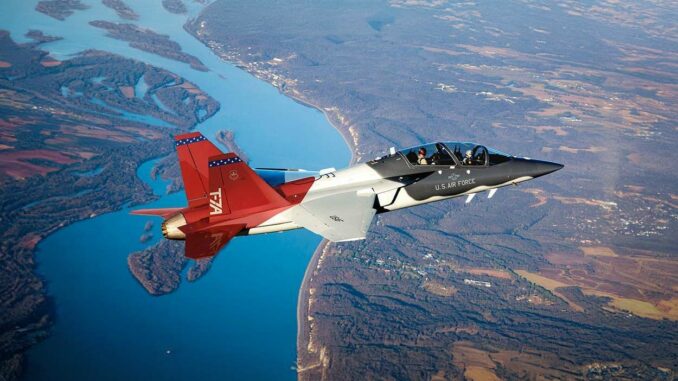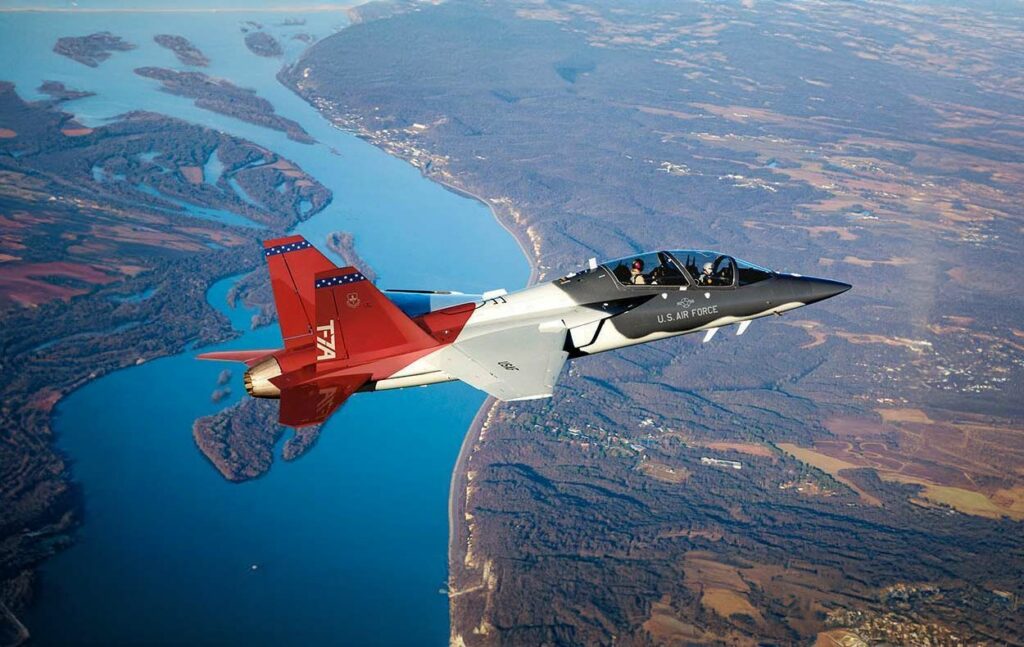
Spain is exploring options to replace the F-5 trainer aircraft, with candidates including the Boeing T-7 and Leonardo M-346, to prepare future fighter pilots.
Spain has relaunched its efforts to replace the F-5 advanced trainer aircraft. This project, essential to support the Spanish air force’s future ambitions, includes the evaluation of several platforms available on the market, as well as the possibility of developing a new system. This article examines the options under consideration, the challenges and the implications of this initiative.
Background and need for replacement
The F-5, used for decades by the Spanish Air Force, is nearing the end of its operational life. Originally scheduled for retirement in 2028, this deadline has been pushed back to 2030 or later. The need to replace this advanced trainer is crucial to prepare pilots for the challenges of next-generation fighter aircraft. Candidate platforms for this replacement must not only fill current gaps, but also be part of a long-term strategy to modernize pilot training capabilities.
Replacement Options
1. Boeing T-7:
The Boeing T-7 is an advanced training aircraft developed in collaboration with Saab. It is designed to provide realistic and effective training for modern fighter pilots. The T-7 uses advanced simulation systems and an open architecture, facilitating future technological upgrades. Its ability to mimic the flight characteristics of fifth- and sixth-generation aircraft makes it a serious contender.
2. Korea Aerospace Industries T-50:
Another contender is the T-50, developed by Korea Aerospace Industries in partnership with Lockheed Martin. This supersonic trainer is used by air forces around the world. Its compatibility with modern weapons and advanced simulation capabilities make it a viable option for replacing the F-5.
3. Leonardo M-346:
The Leonardo M-346 is a trainer aircraft designed to prepare pilots for new-generation fighter aircraft. Used by several European countries, the M-346 offers comprehensive training thanks to its advanced simulation systems and superior performance. Its flexibility and relatively low operating costs are major assets.
4. Turkish Aerospace (TAI) Hurjet:
The Hurjet, developed by Turkish Aerospace Industries, is a new entrant in the field of advanced training aircraft. With capabilities similar to those of the T-50 and M-346, the Hurjet is designed to offer versatile, advanced training. Its selection could strengthen defense ties between Spain and Turkey.

New system development
In addition to the options available on the market, Spain is considering developing a new training system in partnership with other European countries. This could include collaboration with France, Italy or the UK. The development of such a system would make it possible to design a training aircraft specifically adapted to the needs of the Spanish air force and future sixth-generation combat platforms.
Challenges and Implications
1. Technological challenges:
Developing a new training aircraft requires considerable investment in research and development. Technological challenges include designing a system capable of faithfully simulating the characteristics of modern fighter aircraft, while remaining flexible and scalable.
2. economic implications
The choice between purchasing an existing system or developing a new platform has major economic implications. Purchasing an existing system may offer a faster, less expensive solution in the short term. On the other hand, developing a new system could involve higher initial costs, but would offer strategic advantages in the long term.
3. Geopolitical impact:
Partnering with other European countries to develop a new trainer aircraft could strengthen defense relations within Europe. However, this would require close coordination and could lead to differences in priorities and technical specifications.
Future prospects
Replacing the F-5 is part of a wider vision for modernizing the Spanish air force. The development of the future combat aircraft with France and Germany, scheduled to enter service after 2040, is a key element of this vision. Training pilots on advanced training systems compatible with these future combat aircraft is essential to ensure a smooth transition and optimum readiness.
Spain’s F-5 replacement project is crucial to maintaining and improving the air force’s training capabilities. By evaluating options such as the Boeing T-7, T-50, M-346 and Hurjet, and considering the development of a new system, Spain is seeking to balance immediate needs with long-term strategic objectives. Decisions taken in this area will have a significant impact on pilot preparation and the country’s defense capability.
War Wings Daily is an independant magazine.